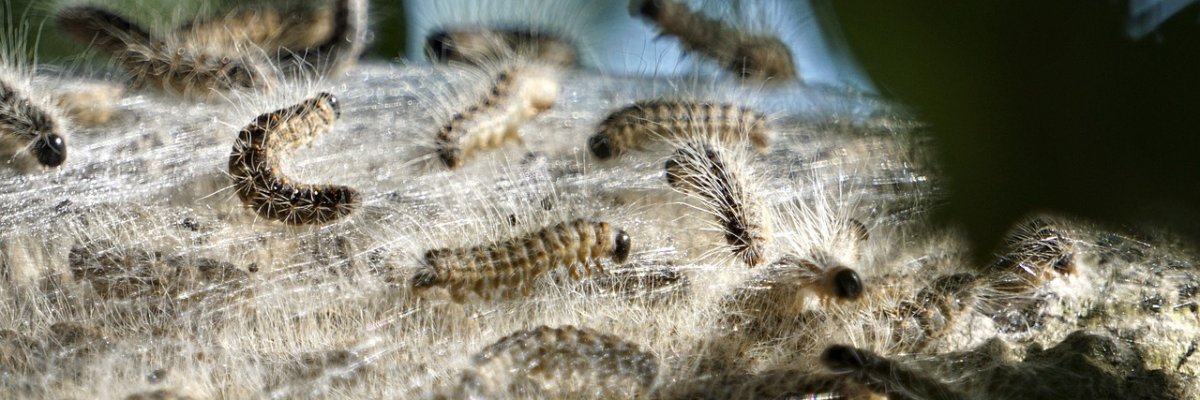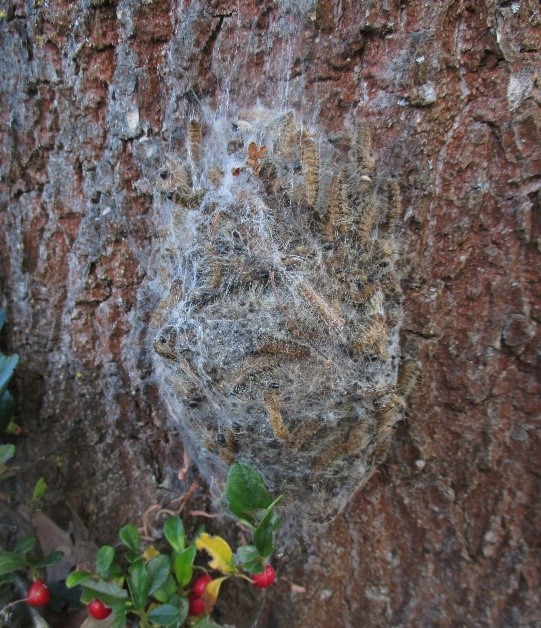Oak processionary moth
The oak processionary moth
The caterpillars of the inconspicuous moth, which move in typical "processions" on oak trees, pose a serious health risk to humans and animals due to their dangerous stinging hairs. These stinging hairs, which contain the nettle toxin thaumetopoein, can cause skin irritation, breathing difficulties and, in severe cases, allergic reactions in humans.
The oak processionary moth has been detected in Waldeck-Frankenberg since 2019 and the number of reported cases is steadily increasing. Two confirmed detections were reported in 2025, which is a clear sign that the species is continuing to establish itself and spread. The oak processionary moth can potentially occur in all areas with oak populations.
Contact with the caterpillars or their webs should be avoided. If you come into contact with the stinging hairs, it is recommended that you shower immediately and wash your clothes at 60 degrees to wash off the nettle venom. Observe possible reactions such as skin rashes, shortness of breath or eye inflammation and consult a doctor quickly if you experience severe symptoms. Pets should also be checked after walks, as the hairs can get stuck in their fur.
The oak processionary moth should be controlled by specialised companies. The nests should be removed, especially in hazardous areas (such as playgrounds). It is also recommended to report the discovery to the Environmental and Climate Protection Service so that they can collect the locations and keep an eye on the spread.
Locations reported in 2025:
- Waldeck-Bringhausen
- Near Allendorf (Eder)


